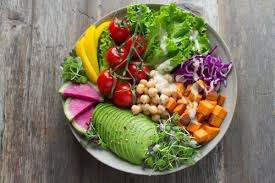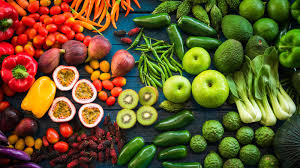Eating a variety of colorful vegetables and fruits is one of the simplest ways to improve your health. It may sound basic, but the benefits of consuming a rainbow of produce are well-documented. While the term “superfood” is often used in marketing to hype up certain foods, the truth is that all fruits and vegetables are beneficial, each offering unique health advantages based on their color.
Understanding the Power of Color
Different plant pigments—responsible for the various colors of fruits and vegetables—offer distinct health benefits. For example, a purple carrot is different from a traditional orange one, and a red apple differs from a green one in the nutrients they provide. Let’s take a closer look at the specific pigments and what they do for your health.

- Lycopene
This antioxidant gives red fruits and vegetables their color. It has been linked to improved eye health and a reduced risk of cancer and heart disease. Lycopene-rich foods include tomatoes, red peppers, watermelon, and guavas. - Anthocyanin
Found in purple, blue, and red produce, anthocyanins help combat oxidative stress and slow the aging process. Common anthocyanin-rich foods are blueberries, blackberries, cherries, eggplant, red cabbage, and purple potatoes. - Lutein
Lutein, often paired with zeaxanthin, is associated with eye health, particularly the prevention of macular degeneration. It is abundant in yellow or green vegetables, such as corn, yellow peppers, zucchini, spinach, and kiwi. - Beta-Carotene
This orange pigment, which gives carrots and sweet potatoes their vibrant color, is crucial for vision and immune health. It is also found in leafy greens like kale and spinach, as well as in squash, pumpkins, and peppers.
Key Plant Pigments and Their Benefits
The Power of Variety
Each color in your diet contributes something different. For example, purple vegetables like eggplants are high in anthocyanins, which help reduce the effects of aging. Red vegetables like tomatoes are packed with lycopene, supporting both heart and eye health. Carrots, whether orange, yellow, or purple, all offer a different set of benefits thanks to their specific pigments.

The Heirloom Advantage
Beyond the common varieties of fruits and vegetables, heirloom and heritage varieties often offer even more diversity in color, shape, and nutrient profile. Heirloom tomatoes, for example, come in colors ranging from deep purple to green and yellow. Other crops like peppers, radishes, and carrots also come in a wide range of vibrant hues, adding variety and nutrition to your meals.
Simple Steps for Better Health
Incorporating a variety of colorful fruits and vegetables into your meals is an easy way to boost your nutrient intake. The idea is simple: eat a rainbow! By doing so, you ensure you’re consuming a wide array of beneficial plant compounds. Whether you’re growing your own produce or shopping at the local market, aim for a mix of colors to maximize your nutritional intake.

The takeaway? Colorful vegetables aren’t just visually appealing—they pack a punch when it comes to health benefits. So, next time you’re planning your meals or heading to the store, think about how you can add a little more color to your plate for better health and wellness.
